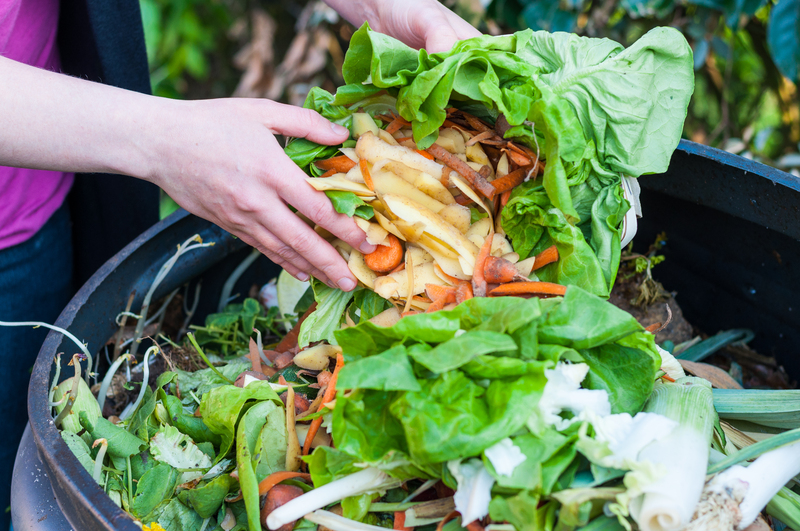Simple Steps to Recycle Pots and Pans the Right Way
Looking to dispose of your old cookware responsibly? Too often, pots and pans end up in the trash, filling landfills and wasting valuable materials. However, with a little knowledge and some simple actions, you can recycle your pots and pans the right way while helping the environment. In this detailed guide, you'll learn the best methods, community resources, and creative options to recycle pots and pans the green way, reduce waste, and even support local causes.
Why Recycle Your Old Pots and Pans?
Pots and pans are often made from metals such as aluminum, stainless steel, cast iron, and copper. These materials are valuable resources that can be reclaimed and reused. Recycling cookware helps:
- Reduce landfill waste: Cookware doesn't break down and takes up space for centuries.
- Save energy: Recycling metals uses much less energy than extracting new ore.
- Preserve natural resources: Reusing metals protects our ecosystems and reduces mining.
- Support your community: Local recycling creates jobs and resources.
Materials Commonly Found in Cookware
- Aluminum
- Stainless steel
- Cast iron
- Copper
- Non-stick coatings like Teflon (PTFE or ceramic, in some cases)
Understanding what your pans are made of is key to recycling them responsibly.

Preparing Pots and Pans for Recycling
Before recycling pots and pans, prepare them for pickup or drop-off. Here's how to do it right:
1. Clean Thoroughly
Remove excess food, grease, and debris. Most recyclers need cookware to be clean to avoid contamination.
2. Separate by Material
If your cookware has mixed materials (like plastic handles or glass lids), try to separate these components. Some centers only accept pure metal items.
- Metal Only: If possible, remove handles, knobs, or lids that aren't metal.
- Non-stick Coatings: If pans are heavily chipped, check your recycling center's rules or see if scrap metal yards will accept them.
3. Check Local Recycling Guidelines
Visit your local municipality's website or recycling drop-off center. Many curbside recycling programs do not accept cookware, so alternative methods are often required.
Simple Steps to Recycle Pots and Pans Properly
Step 1: Find a Scrap Metal Recycling Center
The most widely accepted way to recycle old pots and pans is through scrap metal facilities. Follow these steps:
- Search for scrap metal yards near you using online directories.
- Call ahead to ask which cookware types they accept and if coatings or plastic must be removed.
- Drop off your prepared cookware.
Tip: Some facilities may even pay you a small amount for scrap aluminum, stainless steel, or copper.
Step 2: Utilize Special Community Recycling Events
Many towns offer household hazardous waste days or specialty recycling events that accept metal goods. To recycle pots and pans:
- Watch your city or county's event calendar.
- Bring your old cookware to the event for safe disposal or recycling.
Step 3: Donate Usable Cookware
Are your old pots and pans still functional? Donating them is another green option:
- Give to local thrift stores, secondhand shops, or charities.
- Post on buy-nothing groups or online marketplaces.
- Check with shelters, food pantries, or community kitchens.
Donations help others and extend the life of your cookware, reducing demand for new resources.
Step 4: Explore Upcycling or Creative Reuse
Not ready to part with your cookware? Upcycle your pots and pans! Here are some creative ideas:
- Turn an old pan into a quirky planter or flower pot.
- Use cast iron skillets as rustic bird feeders.
- Create storage solutions like kitchen organizers or wall hooks.
- Craft clocks, lamps, or art from pots and handles.
By repurposing your cookware, you reduce waste and make something beautiful or functional.
Can I Put Pots and Pans in the Recycling Bin?
In most places, pots and pans are not accepted in curbside recycling bins. This is because:
- They're too large or heavy for most facility sorting machines.
- Mixed materials (like plastics or coatings) complicate processing.
- Sharp edges can pose risks to recycling workers.
Always check your local recycling requirements before putting cookware in the bin. When in doubt, take them to a metal recycler or community facility.
How to Tell What Material Your Cookware Is Made Of
If you're unsure about the composition of your pots and pans:
- Check markings on the bottom for manufacturer information.
- Use a magnet: Aluminum is usually non-magnetic, while stainless steel and cast iron are magnetic.
- Modern pans may have labels indicating "aluminum," "stainless," or "non-stick."
- For copper, the pan will have a reddish-brown tint.
FAQs on Recycling Cookware
Can you recycle non-stick pans?
Most metal recyclers accept non-stick cookware as long as the pan is primarily metal. However, the non-stick coating (like Teflon) may complicate recycling for some facilities. Always ask the center first. If non-stick pans are heavily worn, some recyclers may refuse them. Responsible disposal is still better than landfilling.
What about glass lids and plastic handles?
Glass lids often need separate recycling through glass programs. Plastic or wooden handles are generally not accepted for recycling, so remove these before drop-off when possible. If you can't separate them, consult the recycling center for advice.
Are cast iron pans recyclable?
Absolutely! Cast iron cookware is valued at scrap metal yards. Some charities or antique stores may also welcome usable cast iron pans.
How should I dispose of damaged or burnt pots?
If pots or pans are beyond repair, take them to a metal recycler. Do not simply toss them in regular trash if a recycling option is available near you.
Eco-Friendly Alternatives for Old Cookware
Repurposing in the Garden or Home
- Old pans make excellent succulent planters or herb pots.
- Large pots can hold tools, sewing supplies, or other household items.
Art Projects
- Pots become unusual photo frames or clock faces.
- Handles can be repurposed as hooks or drawer pulls.
- Paint and decorate pans for DIY wall art.

Tips for Choosing Eco-Friendly Cookware in the Future
After recycling your old cookware, consider sustainable and long-lasting replacements:
- Buy pans made from recycled metal or with minimal coating.
- Choose products from companies with eco-friendly manufacturing practices.
- Opt for classic materials like stainless steel, cast iron, or uncoated ceramic.
- Take good care of your new cookware to extend its lifespan and minimize future waste.
Final Thoughts: Recycle Cookware for a Greener Tomorrow
Recycling pots and pans isn't just simple, it's essential for protecting our environment and saving resources. By following these straightforward steps, you not only keep metal out of landfills, but also encourage responsible habits in your community. Whether you choose to recycle your cookware through metal recyclers, community programs, donation, or upcycling, every action makes a difference.
Remember: The right way to recycle old pots and pans starts with you! For even more eco-friendly living tips, follow your city's recycling news or browse local upcycling events. Reducing waste one kitchen item at a time helps pave the way to a greener, cleaner world.